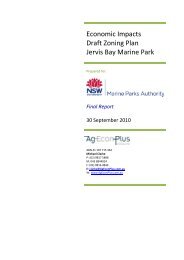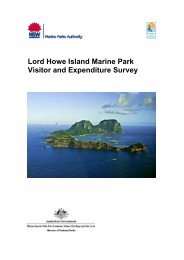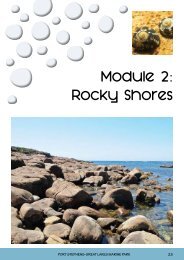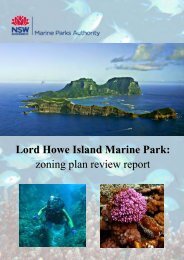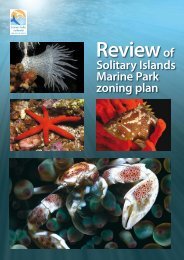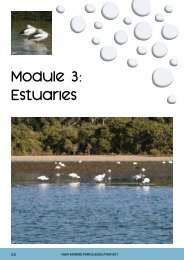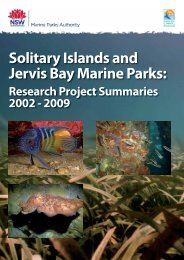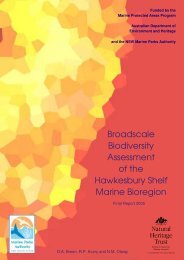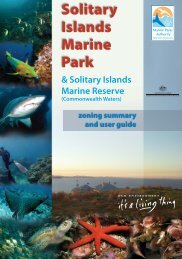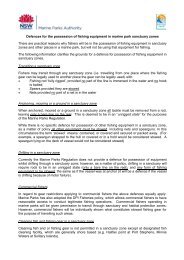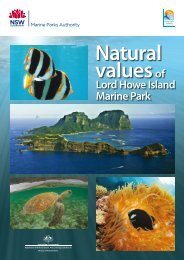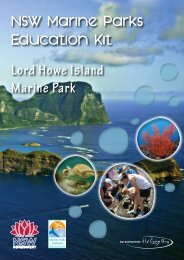Natural values of the Solitary Islands Marine Park - Marine Parks ...
Natural values of the Solitary Islands Marine Park - Marine Parks ...
Natural values of the Solitary Islands Marine Park - Marine Parks ...
- No tags were found...
You also want an ePaper? Increase the reach of your titles
YUMPU automatically turns print PDFs into web optimized ePapers that Google loves.
6 Pelagic ecosystemsOcean currents are a major influence on open ocean habitats in <strong>the</strong> marine park. TheEast Australian Current is active during <strong>the</strong> warmer months, and at times it movesclose inshore, bringing tropical organisms from <strong>the</strong> sou<strong>the</strong>rn Great Barrier Reef. Thiscreates conditions which enable many tropical species to settle in <strong>the</strong> marine park.During <strong>the</strong> cooler months, <strong>the</strong> marine park is dominated by inshore currents movingnorthwards. These currents bring temperate species into <strong>the</strong> marine park, and createcooler conditions favouring <strong>the</strong> growth <strong>of</strong> temperate marine life.Open ocean habitats in <strong>the</strong> marine park are inhabited by a wide diversity <strong>of</strong> marineorganisms including whales and dolphins, large pelagic fish (Figure 45), and jellyfishand o<strong>the</strong>r invertebrates. Planktonic processes occurring in open oceans are importantto most marine organisms, as tiny planktonic plants and animals are a rich source <strong>of</strong>food.There is a close association between species in open oceans and o<strong>the</strong>r marinehabitats. Bottom-dwelling fish species rely on pelagic bait species, linking pelagic foodchains with those <strong>of</strong> seafloor communities (Smale 1992). Pelagic and mesopelagicspecies (species living at depths between 180 and 900 metres) are an integral part<strong>of</strong> marine communities found in <strong>the</strong> marine park. Pelagic species provide juvenilesas a source <strong>of</strong> food and to propagate <strong>the</strong>ir species; provide food through fish spawn;recycle nutrients; graze down algal beds; and prey on weak, sick and old individuals.There are seasonal influences on pelagic species <strong>of</strong> interest to fishers includingmackerel species being present in <strong>the</strong> warmer months (usually from January to May).Figure 45.Dolphinfish.



